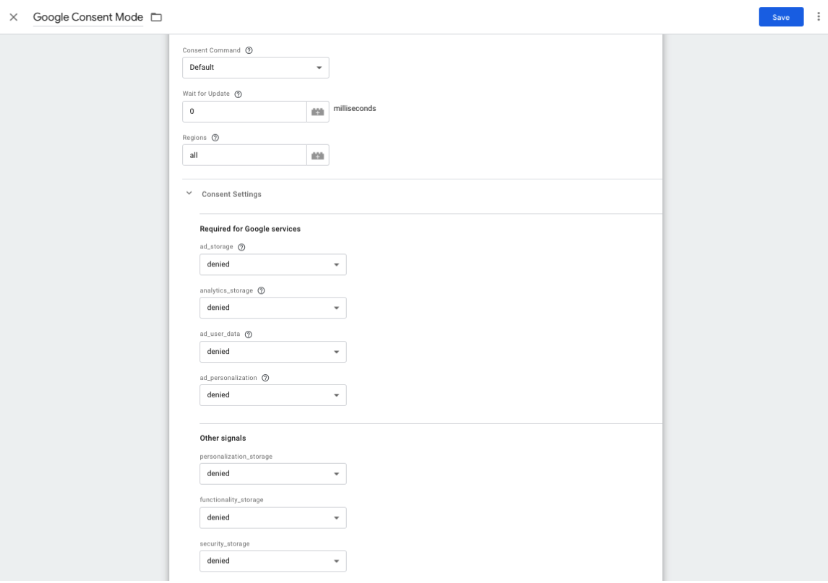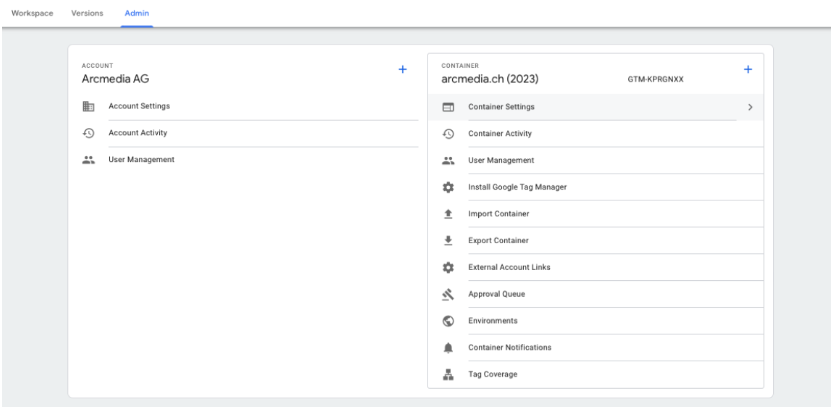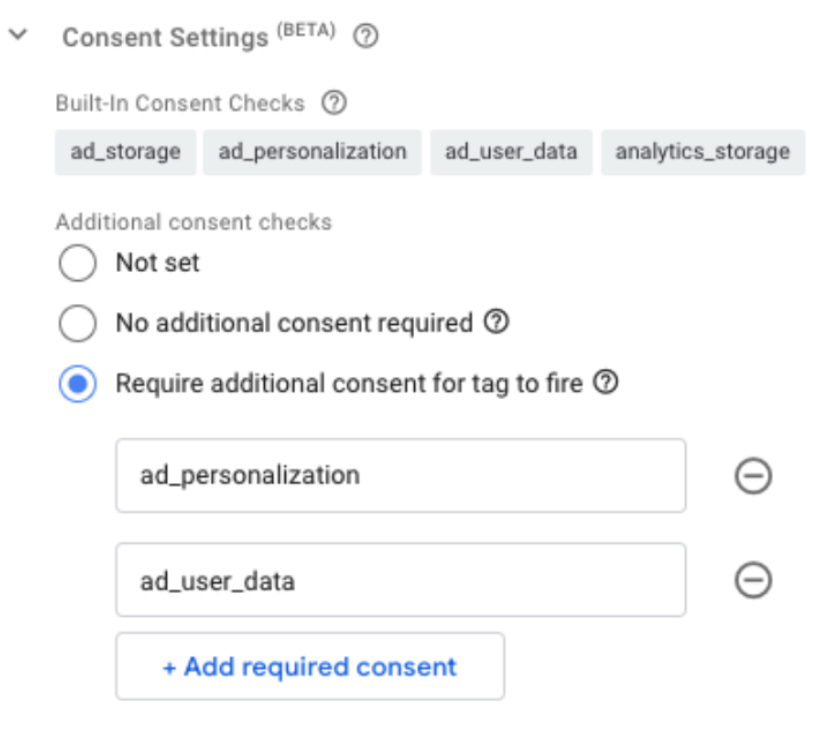Have you heard about the new Google Consent Mode? This innovation affects all website operators in the European Economic Area (EEA) and could also be relevant for Switzerland. What is this Google Consent Mode? And why is it mandatory from 6 March 2024? In this article, we shed light on what Google Consent Mode means, who it affects and what steps are necessary to be compliant.
Update from 30 April 2024: Google announces that from 31 July 2024, the same provisions will apply in Switzerland as in the EEA and the UK.
Ahead: GDPR, cookies & Co
Since May 2018, the General Data Protection Regulation (GDPR) has been the legal basis for the collection, processing and storage of personal data in the EU. Personal data includes data such as email addresses, IP addresses or cookie data.
Cookie data is particularly important in digital marketing. This is because it is needed so that platforms such as Google Analytics and Google Ads can assign user interactions within a website session. To do this, Google Analytics and Google Ads use first-party cookies and third-party cookies to collect information about users and display personalised advertising.
With the introduction of the General Data Protection Regulation, companies in the EU must therefore obtain consent to the use of cookies from their users. How do they do this? With the help of cookie banners on the website. So if a user has given consent to the collection, processing and storage of their data on a website, everything remains as before. Google Analytics and all other Google tags may correctly set cookies and track user behaviour.
But what happens if a user does not give their consent? In other words, if they do not want to be tracked in Google Analytics and do not want to receive personalised remarketing advertising? Then the Google tags must not be triggered. No statistics or conversion data may be collected and no cookies may be set. And this is exactly where Google Consent Mode comes into play:
What is Google Consent Mode?
Google Consent Mode regulates the behaviour of Google tags (Analytics, Ads, Floodlight, Conversion Linker) based on the consent of website users and offers cookie-free tracking for cookie banner opt-outs to close data gaps in Google Ads and Google Analytics. This means that if users reject the cookies in the cookie banner on a website, data can still be sent to Google. This is information that works without cookies and does not contain any personal data. From the perspective of data for digital marketing, Google Consent Mode is therefore a great help. From a data protection perspective, however, Google Consent Mode is in a grey area, as it is tracked even if you reject it - albeit without cookies and without personal data, but it is tracked.
What's new about Google Consent Mode V2?
In November 2023, Google released an update to Google Consent Mode: Google Consent Mode V2. The reason for this is a new EU regulation that obliges companies to meet certain operational and compliance requirements from 2024, for example to be able to continue to serve personalised advertising. In order to continue using data from website and app behaviour, the new Google Consent Mode V2 must be used in the EEA from 6 March 2024. Only with this can Google fulfil the requirements of the new EU regulation.
With the new Google Consent Mode V2 (also known as Basic Google Consent Mode), data is only sent to Google if the user has given their consent - i.e. the user has clicked on "Accept" in the cookie banner. If there is no consent, no data is sent to Google - not even cookie-less data. This setting must be made in Google Tag Manager so that Google can ensure that data is only collected if consent has been given. The new Google Consent Mode V2 requires two new variables in Google Tag Manager:
-
ad_user_data: Tells Google whether a user has "approved" or "denied" consent to tracking with cookies
-
ad_personalization: Tells Google whether users have consented to or opted out of the use of personalised information for remarketing and other purposes
Advanced Google Consent Mode
The new Google Consent Mode V2 offers an "Advanced" version in addition to the "Basic" version described above. In basic mode, no data is collected if consent is not given, i.e. user behaviour is not displayed in Google Analytics, for example. This also means that companies act in accordance with the regulations and do not send any data to Google (because the user has expressly declined). However, it also means that many attributions, e.g. for conversions, can be lost.
The "Advanced" version enables the use of cookie-less information, even if the user has not consented. Aggregated and anonymised user data is collected. Conversion data that would have been lost without consent can be modelled with this information and fed back into the advertising systems. This allows campaigns to be optimised significantly better.
For whom is Google Consent Mode relevant?
If your company uses data in the European Economic Area (EEA) for Google Ads, creates audiences for marketing purposes with Google Analytics data or shares conversions with Google Ads, the new version, the new Google Consent Mode V2, must be used from 6 March 2024. Otherwise, no data, such as conversions or target groups, from Google Analytics 4 may be used in Google Ads and the function for measurement, personalised ads and remarketing in Google Ads.
If your company does not use Google advertising tools, it does not need Google Consent Mode. The previous settings in Google Tag Manager can be retained and tracking will continue as usual. These companies are not affected by the update.
The significance of the new Google Consent Mode for Switzerland
For website operators in the EEA, the new Google Consent Mode is essential to ensure compliance with the GDPR. Although Switzerland is not directly covered by the EU General Data Protection Regulation (GDPR), the new Google Consent Mode is relevant for companies in Switzerland that have an EEA target group. This is because without the new Google Consent Mode, the data of EEA users may not be recorded in Google Analytics. The new Google Consent Mode therefore also offers important guidance for Swiss website operators.
Update from 30 April 2024: Google announces that from 31 July 2024, the same provisions will apply in Switzerland as in the EEA and the UK. It is now necessary for Swiss websites and online shops to implement Consent Mode V2.
Implementation of the new Google Consent Mode
There are various ways in which Google Consent Mode and therefore the new version can be implemented. We shed light on the implementation with the help of a certified Consent Management Platform and the Google Tag Manager.
Integration with a Consent Management Platform
Setting up Google Consent Mode usually works with the help of a consent management platform and the Google Tag Manager without in-depth programming knowledge. A consent management platform is a platform that obtains, stores and manages user consent for cookies and tracking settings on the website. There are several large providers in this area, such as Cookiebot, with which Google Consent Mode can be integrated quickly and easily.
Integration via the Google Tag Manager
Google Consent Mode can also be integrated via Google Tag Manager. However, it is important to understand that using Google Consent Mode does not automatically make the setup GDPR or nSDG compliant. This requires specific triggers and blockers so that services are only triggered when specific consent has been given for them.
But now for the instructions:
-
The first step is to create a new tag, for example using the Consent Mode template by Simo Ahava. This tag contains the various consent parameters such as analytics_storage, ad_storage, ad_user_data or ad_personalisation. The values of these parameters must be set to "denied" by default and only to "granted" if the user has given their consent.

-
In addition, the consent mode must be activated in Google Tag Manager under "Admin" and "Container Settings".

-
Now there is a new icon under "Tags", with which settings for the consent mode can now be made directly.

-
In addition, settings for the consent mode can now be made directly in the tags. All consent statuses accessed by the tag template code are listed in the "Built-In Consent Checks". It is simply an indicator that the template in the code is accessing the consent state. What it does with this consent status depends on the tag itself. "Additional Consent Checks" lists all consent statuses that require a granted status for the tag to be triggered. If the trigger activates the tag and one of the listed consents is assigned the "denied" state, the tag is not triggered.

All tags in Google Tag Manager that process user data must therefore be adjusted so that they act in accordance with the consent mode tags and the consent status. This means that they may only fire if the associated consent mode parameters are set to "granted". More information on the Consent Mode implementation with the Google Tag Manager can be found here in the official Google documentation.
Conclusion and outlook
The new Google Consent Mode V2 represents a turning point that will permanently change the way websites handle user data. It promotes the responsible handling of data and is a further step towards greater data protection and transparency in the digital market. With its mandatory use from March 2024, it will keep the tracking and data protection departments in companies very busy.
The new Google Consent Mode will become an essential part of the digital privacy landscape, helping website operators find the balance between data-driven marketing and protecting user privacy. By adapting to these new requirements, websites can not only ensure legal compliance, but also strengthen the trust of their users.








